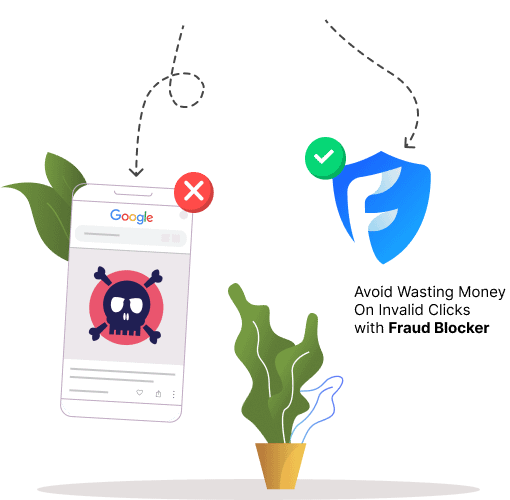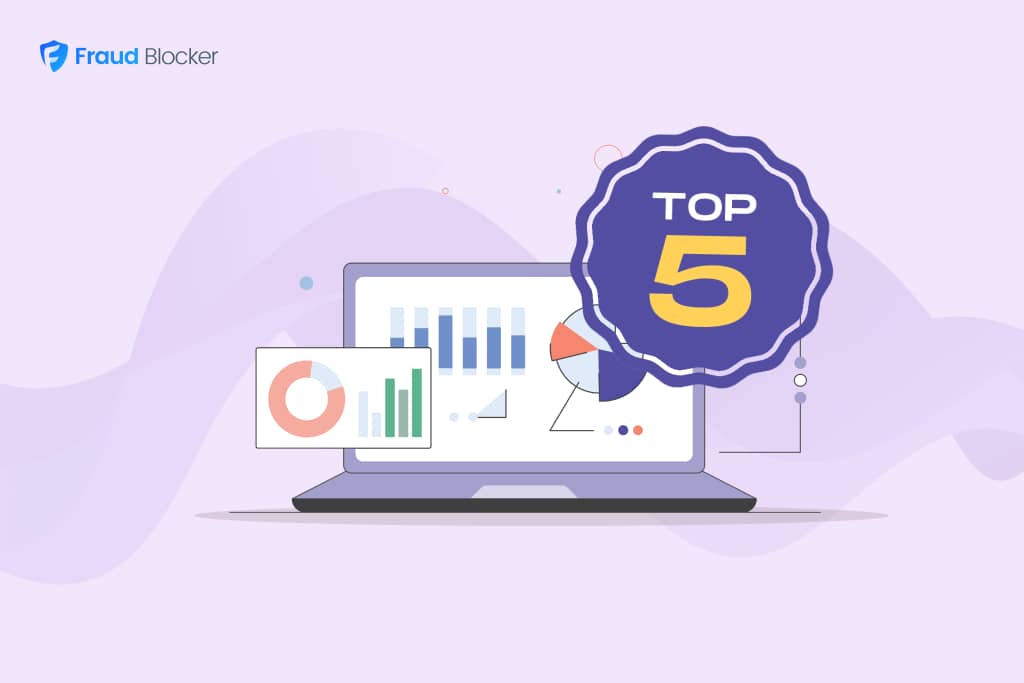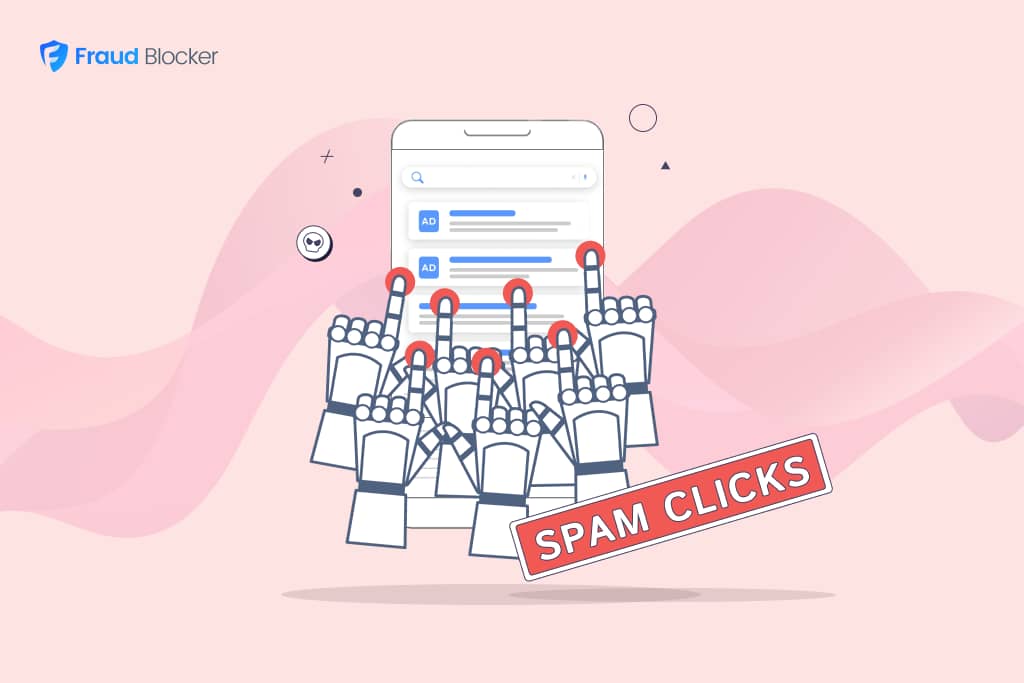
NEW New feature: Verify & block fake emails

We improve your ad performance by blocking click fraud and fake emails

Click fraud is costing advertisers billions in loses. Learn more here.

Click fraud is costing advertisers billions in loses. Learn more here.

Invalid clicks have a massive impact on the performance of your ad campaigns, and like most marketers, you’re probably wondering how your invalid click rates stack up against other Google ad campaigns out there.
Since we deal with invalid traffic daily, we decided to sift through the data and answer the question, “What’s the average invalid click rate?” once and for all in this report.
Read on to see where your ad category stands and what you can do to drive down those invalid clicks.
Our report is based on A LOT of data.
The data provided in this article is based on an analysis of 96 million ad clicks across 85,000 accounts and 24,582 active campaigns on Google Ads over a 6 month period, ending June 30, 2025. The data is provided from a section of Fraud Blocker’s data, based on their clients’ connections to the Fraud Blocker platform. All data in this report is anonymous.
Invalid clicks are clicks that do not have legitimate intent or are not from real users. These clicks will likely never convert, because they aren’t backed by the intention to convert or learn more about the product.
Invalid clicks include:
Read more:
The average invalid click rate for Google Ads is 11.5%. This is an average across all industries and campaign types.
Your invalid click rates might be higher or lower depending on several factors:
One key factor is the industry, as high competitive ones such as legal services and real estate will see higher invalid click rates.
Some other factors that could raise or lower your invalid click rates are geo-targeting, ad content and keywords, Negative keywords, and so on.
This isn’t an exhaustive list, as any targeting factor can affect your invalid click rates.
On some days there are spikes in invalid traffic. For example, on September 7, 2024, Google Ads had 40% of all clicks on Google determined to be invalid (229,000 invalid clicks). This is likely an attack on Google ad traffic that day by sophisticated bots. Google ultimately refunded customers.
Our data shows that invalid click rates have doubled from 5.9% in 2010 to 12.3% in 2024. This is likely due to the increased sophistication of AI-driven bots, click bots, malware and more.
Here is the same invalid click rate data as a table:
| Year | Avg Invalid Click Rate |
| 2010 | 5.9% |
| 2015 | 8.0% |
| 2020 | 11.1% |
| 2021 | 11.6% |
| 2022 | 10.8% |
| 2023 | 11.8% |
| 2024 | 12.3% |
| 2025 | 11.5%* |
* Data as of June 30, 2025
Search ads have the highest invalid click rate at 14.8%, followed by display ads at z%. Xzy seems to have the fewest invalid clicks of any Google Ads campaign.
From our findings, the more common a Google campaign type is, the higher the invalid click rate.
Google Ads does not provide information on Demand Gen and video ads so those have not been included here.
Google’s invalid click numbers are a great benchmark, but we wanted to go a step further and compare them against an independent study and our own data.
Here are the results:
We reviewed internal data for over 95M ad clicks, and found that the average invalid click rate for data on our platform was 17.87%. This data represents an average across organizations of all industries and company sizes.
An independent study done by Juniper Research showed that 22% of all ad spend was lost to ad fraud, and estimated global losses in 2023 were a whopping $84.2 billion. This figure covers a blend of advertising channels, including display, social, mobile and more.
By 2028, this loss is projected to nearly double, reaching $172.3 billion.
Looking at click fraud specifically, Juniper Research estimates that 17% of click-throughs on PCs and desktops in 2023 were fraudulent. That resulted in about $37 billion being wasted. The number is estimated to grow to over 65 billion by 2028.
You can read the full Juniper Research report here.
To see the number of invalid clicks identified by Google Ads, follow these steps in your main reports dashboard:
You can now scroll to the right to view the new columns and access the data on invalid clicks.
Invalid clicks on Google Ads are refunded automatically. You’ll see these as credits in your billing transactions.
If you feel you’ve had invalid clicks beyond what Google is showing, such as after you received an usually high volume of fake leads, you can complete Google’s Click Quality Form (warning: success rates can be low).
There are a few things to keep in mind before submitting, so be sure to check out our article for a full breakdown: How to Get a Refund for Invalid Clicks from Google Ads.
Google’s refund process can be difficult and the success rate is low.
Instead, there are more proactive measures you can take to avoid wasting your money in the first place.
Here are 5 effective ways to be proactive, protect your budget, and lower your invalid click rate:
Fraud Blocker offers an all-in-one solution that optimizes ad performance by identifying, analyzing, and preventing ads from being served to bots, competitors, and other sources of non-human traffic.
To do this, our tool tracks web visitors’ IP addresses and device fingerprints and reviews dozens of real-time signals like bounce rates, IP-to-device rations, VPNs, click frequency, and more to differentiate legitimate users from invalid traffic.
Once a low-quality user is detected, Fraud Blocker immediately prevents your ads from reaching them, preserving your budget and enhancing ad performance.
Ready to see the impact? Try Fraud Blocker’s 7-day free trial and discover just how much you can save while protecting your ad investment.
*Results shown are estimations only



